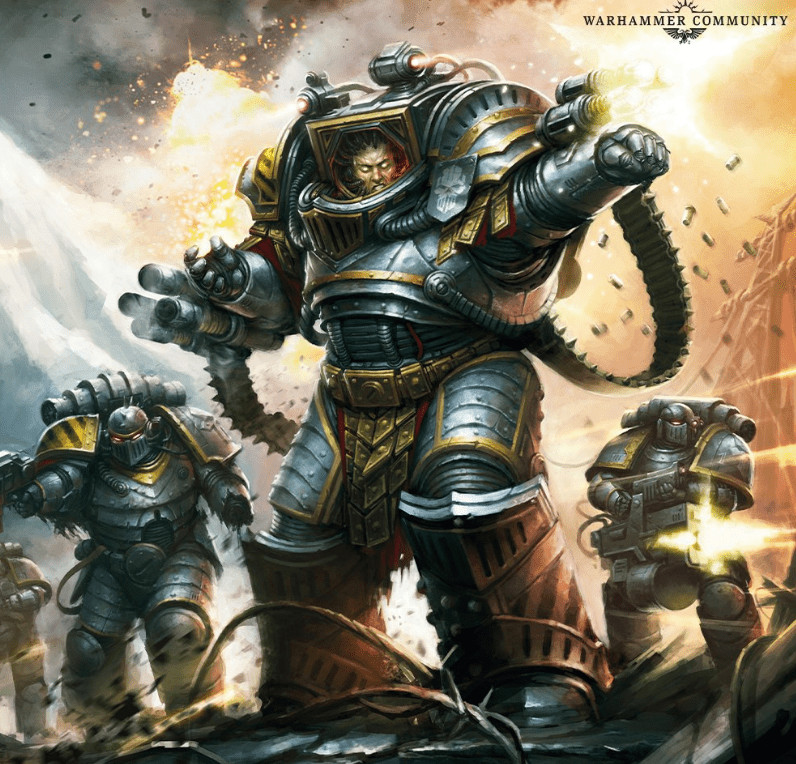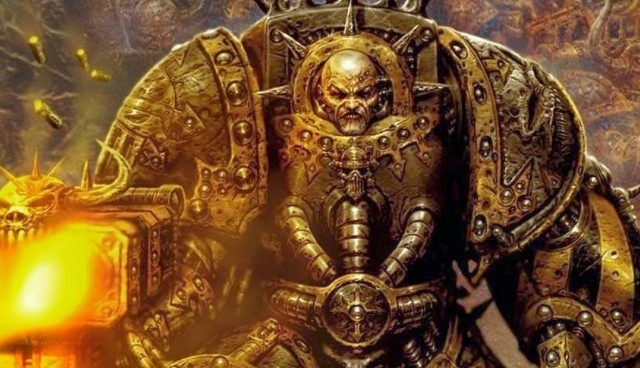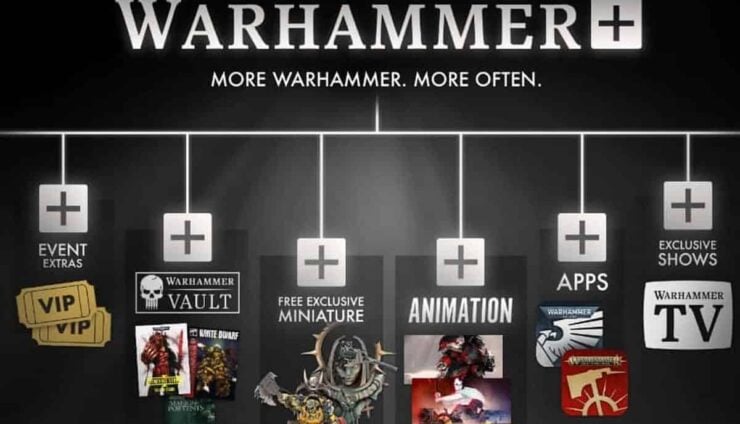The Iron Warriors are the siege masters of Warhammer 40k; learn their deadliest battles, relentless tactics, and how they crush every foe in their path!
Updated June 24th, 2025, by Rob Baer- with updated links and information about the Iron Warriors in Warhammer 40k.
Siege warfare in Warhammer 40k isn’t about flashy heroics or swift assaults—it’s about grinding your enemy into dust, and no one does it better than the Iron Warriors. These grim, methodical warlords don’t care for glory or theatrics; they care about one thing: breaking defenses with cold, calculated efficiency.
From the brutal Siege of Terra to the obliteration of Hydra Cordatus, the Iron Warriors have built a reputation for winning wars through sheer attrition and relentless firepower.
Their tactics? Ruthless. Their patience? Infinite. Their enemies? Buried under rubble.
If you’ve ever wondered what makes these masters of siege warfare so effective, you’re in the right place. We’ll break down their deadliest battles, their most brutal strategies, and why, when they show up, surrender is the only smart move.
Iron Within, Iron Without

Overview of the Iron Warriors

They didn’t fight battles; they survived them. During the Horus Heresy, they turned against the Imperium, proving that their grudge against their so-called brothers ran just as deep as their siege trenches.
Their symbol, the Iron Warriors symbol, represents their unbreakable will—cold, calculating, and merciless. While they may not have the flashiest warbands in the Chaos Space Marines, they make up for it with sheer efficiency. Their fortresses are death traps, their armies are tireless, and their loyalty to destruction is absolute.
Importance in Warhammer 40k
In Warhammer 40k, these warriors have carved out their reputation as the siege experts of Chaos. Their miniatures are loaded with brutal details, perfect for anyone who wants their army to radiate raw destruction. From standard Iron Warriors models to custom conversion projects, their aesthetic screams function over form. Because at the end of the day, war isn’t pretty, it’s effective.
With units like Obliterators, Daemon Engines, and even those with the infamous Iron Warriors Mark of Slaanesh, this force isn’t just about artillery and patience—it’s about crushing everything in its path. Whether it’s in 30k history or the modern setting of 40k, their presence in the lore is undeniable.
The Iron Warriors’ Siege Tactics

No one in the Chaos Space Marines ranks understands siege warfare like they do, and they’ve built their entire military doctrine around it. Whether it’s fortifications, defensive lines, or planetary strongholds, nothing stands against their relentless assaults.
From the dark days of the Horus Heresy to the brutal conflicts of the 41st millennium, the 40k Iron Warriors have perfected the art of the slow, crushing kill (and could make a fun story in the Cavill Amazon series). Walls crumble, trenches become mass graves, and any defenders foolish enough to resist are slowly ground into dust. Unlike other Chaos Legions that thrive on excess or mutation, these warriors prefer cold, calculated destruction.
Strategy and Planning
Winning a siege isn’t just about firepower; it’s about patience. The Iron Warriors forces in 40k don’t rush headlong into battle like some rabid warband. They set the stage for victory long before the first shot is fired. Their battle plans are precise, methodical, and designed to break an enemy before the real fight even begins.
An Iron Warrior 40k force operates like a relentless machine. Supply lines are secured, artillery placements are set, and trench networks stretch for miles.
No move is made without careful consideration, ensuring that every resource is maximized. They don’t need reckless charges or heroic last stands—they just need time. Given enough of it, any fortress, city, or planet will fall.
Use of Artillery and Technology

From Basilisks and Vindicators to terrifying Daemon Engines, their approach to war is simple: fire until nothing remains standing. Their symbol might as well be a smoking ruin because that’s what they leave behind. Their siege engines operate with brutal efficiency, reducing enemy fortifications to rubble before their infantry even arrives.
Iron Warriors models often reflect this machine-like nature, covered in siege-themed details, heavy armor plating, and ominous hazard stripes. Whether it’s a classic 30k scheme or a more modern interpretation, their visual style screams unbreakable endurance.
Psychological Warfare

Defenders hear the never-ending barrage of artillery, knowing that eventually, their walls will fall. Resources dwindle, hope fades, and before the first Iron Warrior even steps inside the breach, their enemies have already lost. For them, warfare isn’t about honor or bloodlust—it’s about ensuring the enemy knows they were doomed from the start.
Even among the Chaos Space Marines, their reputation is feared. Some Iron Warriors miniatures even feature cruel, calculated details like impaled bodies or shattered fortifications, emphasizing the slow, methodical way they wage war. Whether through the madness of Mark of Slaanesh warbands, or the sheer discipline of their main forces, one thing remains clear—resisting them is pointless.
Notable Sieges in History

They don’t charge in with reckless abandon or get caught up in the chaos of battle like other Chaos Space Marines. Instead, they take their time, breaking enemies piece by piece until nothing is left.
Some of the most infamous sieges in 40k history showcase exactly why this Legion is feared across the galaxy. From the treacherous halls of the Imperial Palace to the doomed world of Iax, their record speaks for itself.
The Siege of Terra

During the assault on the Imperial Palace, the Warhammer 40k Iron Warriors were at the front lines, systematically dismantling the strongest defensive position in human history.
While the battle ultimately ended with the death of Horus and the retreat of the traitor forces, the 30k era was defined by the destruction they left behind. The Imperial Fists may have been the architects of the Emperor’s defenses, but the Iron Warriors made sure they would never stand the same way again.
The Battle of Iax
Fast forward to the 41st millennium, and the Iron Warriors are still at it, proving that siege warfare is as effective as ever. The Battle of Iax is a prime example of what happens when they set their sights on a target. Iax was once a thriving agri-world, but when the Iron Warriors wh40k forces attacked… It became a wasteland of collapsed defenses and endless artillery barrages.
What made this battle so brutal was the Legion’s patience. They didn’t rush in or waste resources on pointless skirmishes. Instead, they bombarded the planet for so long that even the hardened warriors of the Imperium lost hope. When the final assault came, the defenders were already beaten—physically, mentally, and strategically.
The Fall of Kaurava

The defenders of Kaurava thought their strongholds were impenetrable. The Iron Warriors models often reflect their methodical approach, and on Kaurava, this precision was on full display. With their signature Iron Warriors symbol emblazoned across war machines and fortifications, they advanced with slow, grinding efficiency.
The use of heavy artillery, siege breakers, and even the dreaded Iron Warriors Mark of Slaanesh warbands made sure there were no survivors. Kaurava fell, like so many others before it, reinforcing the fact that when the Warhammer 40k Iron Warrior sets its sights on a target, there’s only one possible outcome—total annihilation.
Iron Warriors and Chaos

They turned against the Imperium not because of some grand vision or prophecy but because they were tired of being treated as expendable siege experts while other legions basked in glory. So, are there any loyalist Iron Warriors 40k? Yes, some small factions did not turn to chaos and continued to serve the Emperor. But as a whole, they are on the side of chaos. There are some successor chapters that are loyalists.
That grudge eventually led them straight into the arms of Chaos, though not in the way most of their allies did. The Warhammer 40k Iron Warriors see Chaos as a tool rather than a divine force to be revered.
If it helps them bring down walls faster, obliterate stronger fortifications, or outlast their enemies, they’ll use it. But faith? That’s for the weak.
Embracing the Dark Gods

Daemon engines, dark rituals, and warp-infused war machines have all found a place in their arsenals. Some warbands within the legion have even gone a step further, fully embracing Chaos in ways that would make their primarch, Perturabo, grit his teeth in frustration. The Iron Warriors with the Mark of Slaanesh is one such example—warriors who have abandoned pure logic in favor of excess, feeding off the sensation of destruction itself.
While some within the Chaos Space Marines ranks live for mutation and the gifts of the gods, most Iron Warriors still see the long game. They aren’t looking to become daemon princes or lose themselves in the madness of the warp. They’ll take the power Chaos offers, but only on their terms.
Differences Between Iron Warriors and Other Chaos Legions

They don’t charge recklessly or fight for the thrill of battle. If a war can be won by crushing an enemy under artillery fire for weeks without ever engaging in close combat… That’s exactly what they’ll do. This methodical, ruthless approach makes them a stark contrast to their fellow Chaos-aligned legions, many of whom act on impulse rather than planning.
While the likes of the Warhammer Iron Hands focus on mechanical perfection and the Black Legion seeks dominance, the Iron Warriors 30k and beyond remain focused on one thing—breaking their enemies in the slowest, most efficient way possible.
The Role of Nurgle and Slaanesh

Nurgle’s influence makes sense. Resilience, decay, and never-ending endurance fit well with a legion built around long sieges and attrition warfare. On the other hand, Slaanesh’s involvement is more chaotic. With some warbands indulging in the sensation of endless destruction, relishing in the ecstasy of total annihilation.
Whether through the raw endurance of Nurgle, the excess of Slaanesh, or simply their own calculated brutality, the Iron Warriors in WH40k remain one of the most terrifying and efficient forces in the galaxy.
Iron Warriors in the Current Meta

While some Chaos factions rely on fast assaults or psychic trickery, the Iron Warriors’ 40k approach is simple. Bring the biggest guns, take the hardest hits, and grind down the opposition until nothing remains. Their ability to shrug off damage while dishing out relentless firepower makes them one of the most reliable forces in the game.
They have strong synergies between heavy armor, artillery, and defensive buffs. The 40k Iron Warriors remain a solid pick for players who prefer methodical destruction over reckless charges.
Army Composition and Best Units
A proper Warhammer 40k Iron Warriors army doesn’t just rush across the battlefield hoping for the best. It moves with calculated precision, using a combination of durable infantry, devastating fire support, and heavily armored vehicles.
- Havocs and Obliterators – These units shine in an Iron Warrior 40k list, raining down overwhelming firepower while benefiting from their Legion trait, which helps mitigate enemy cover bonuses.
- Daemon Engines – Maulerfiends and Forgefiends fit right into the mechanical aesthetic of the Iron Warriors WH40k, providing aggressive forward pressure while absorbing enemy fire.
- Vindicators and Land Raiders – The Iron Warriors don’t do subtlety, and nothing screams “siege warfare” like a Land Raider filled with Chaos Terminators rolling straight into enemy lines.
- Chaos Space Marines – Standard troops may not be flashy, but in an Iron Warriors 30k or modern 40k list, they hold the line, wear down opponents, and provide critical board control.
The best Iron Warriors models often emphasize heavy armor and battlefield control. Players interested in customization often lean into Iron Warriors conversion projects, reinforcing their units with extra plating, siege weaponry, and weathered battlefield effects.
Conclusion

Their ability to endure and outlast makes them a nightmare for any opponent. Through their brutal sieges, devastating artillery, or relentless mindset, they prove that wars aren’t won in a single charge. They are won through persistence and overwhelming firepower.
FAQs
Did the Iron Warriors fall to Chaos?
Yes, but not in the way most traitor legions did. The Iron Warriors never worshipped Chaos outright. Instead, they saw it as a tool to enhance their war machine.
Over time, Chaos corrupted many of them. Some warbands, such as those bearing the Iron Warriors mark of Slaanesh, fully embraced the Dark Gods. But as a whole, the legion remains more pragmatic than fanatical.
Why do the Imperial Fists and Iron Warriors hate each other?
This rivalry runs deep. The Iron Warriors and Imperial Fists were both siege specialists, but their approaches were complete opposites. The Warhammer Iron Hands might value strength through augmentation. The real grudge match in Warhammer 40k Iron Warriors history has always been with Rogal Dorn’s sons.
The Iron Warriors primarch, Perturabo, resented the way the Imperial Fists were glorified for their defenses while his legion was treated as expendable. Their hatred exploded into one of the most brutal feuds in Iron Warriors 30k history. It led to the infamous Iron Cage conflict.
Which god do the Iron Warriors serve?
Unlike other Chaos Space Marines, the Iron Warriors don’t worship a single Chaos God. Many remain unaligned, using Chaos only as a means to an end. Some warbands do swear allegiance to gods like Nurgle or Slaanesh. For the most part, the legion stays focused on warfare rather than religious devotion.
Final Thoughts
The Iron Warriors models perfectly capture the essence of their legion—heavily armored, battle-scarred, and built for endurance. Whether using classic Iron Warriors miniatures or going for an Iron Warriors conversion project. Their aesthetic and playstyle reflect their brutal, methodical approach to war.
While they may not chase the favor of the Chaos Gods, their relentless efficiency has made them one of the most feared legions in Warhammer 40k history.
Learn How to Play Chaos Space Marines Here!
What do you think about the Iron Warriors in Warhammer 40k? Will you be painting and playing them on the tabletop?






